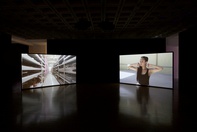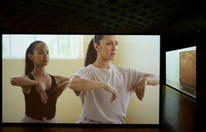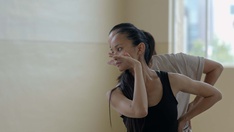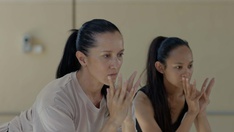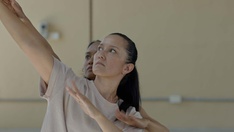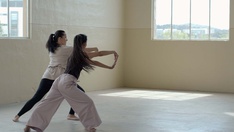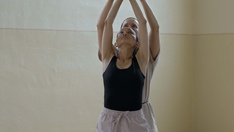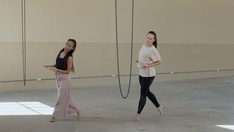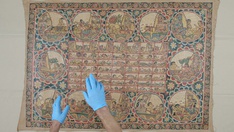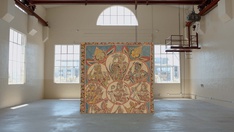Leyla Stevens
Gadigal Country, Sydney
2021
Displayed 2021 at Art Gallery of New South Wales
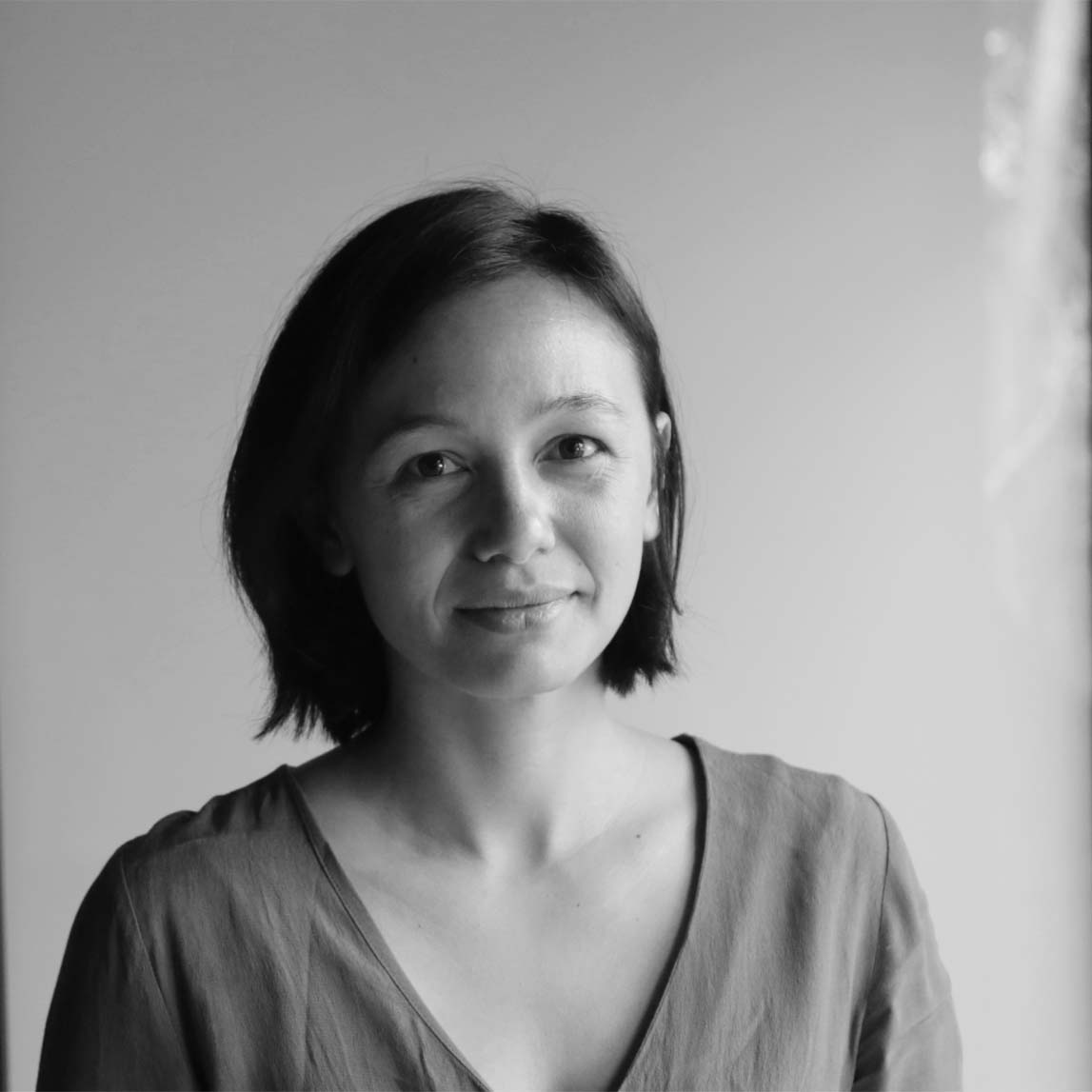
Leyla Stevens
Born 1982, Gubbi Gubbi Country, Cooroy, Queensland. Lives and works on Gadigal Country, Sydney
Leyla Stevens is an Australian–Balinese artist and researcher whose work with photography and moving image is informed by concerns around gesture, ritual, spatial encounters, transculturation and counter histories. Working within modes of representation that shift between documentary and speculative fictions, her work deals with marginalised histories through the idioms of counter archives and alternative genealogies. Stevens’ practice reflects on the diasporic condition and representation of culture, especially that pertaining to her Indonesian heritage, and how these images and objects are interpreted and moved around the world through exhibition and collection practices.
Leyla Stevens has provided the poem ‘Patiwangi: renunciation’ by Indonesian poet Oka Rusmini as an insight into her work.
| inilah tanah baruku mata air menentukan hidupnya ikan-ikan memulai percintaan baru batang-batang yang menopang daun-daun muda membuat upacara penguburan |
this is my new land a spring guarantees its existence fish embark on new love affairs branches bearing budding leaves fashion a burial ceremony |
| telah kucium beragam bunga dan sesajen mengutuk kaki yang kubenamkan di tanah suara genta menyumbat mata angin tak mampu mengantar dewa pulang |
I can smell all kinds of flowers and ritual offerings curse the feet I sink into soil the tinkling of bells arrests the compass powerless to guide the gods home |
| kubuat peta di Pura-Pura mengantar warnaku pada silsilah matahari bumi mengeram, tanah memendam amarah tak ada pecahan suara menyelamatkan warnaku |
In the temples I make a map to carry my colors to the sun’s family tree the earth broods, the soil buries its wrath no fragment of sound remains to set my colors free |
| para lelaki menantang matahari menunggu warna perempuan pilihannya tak ada upacara untuknya di setiap sudut Pura |
the men who are present challenge the sun awaiting their chosen woman’s hue no temple rites exist for them to perform |
| para pemangku hanya mencium bangkai dupa terlalu banyak dewa yang harus diingat dan para lelaki terus meminang |
the officiants can only inhale the incense required to recognize too many gods and still the men press their suits for my hand |
| karena namaku kuharus punya sejarah upacara |
because of my name I need to possess a ritual history |
| anak-anak kelak kumandikan dari pilihan ini |
of this selection I will bathe posterity’s children clean |
| – translated by Deborah Cole for Cordite Poetry Review |
Artist text
by Ruby Arrowsmith-Todd
‘I need to possess a ritual history.’ Each time I watch Leyla Stevens’ work, this line from Oka Rusmini’s poem ‘Patiwangi’ (2003) rings out. The phrase resonates as an unapologetic demand from a female speaker to possess a history of her own making. It also invites further question. After all, what is ritual history? Rituals are collective and reiterative – think of ‘rites of passage’ – they perform and commemorate moments of transformation. Originating in religious ceremony and magic, rituals hold space for histories which are otherwise elusive, unspeakable or irretrievable. And that, I think, is their source of fascination for Stevens. When historical actors and events are razed from the archive and there are no customary scripts to follow, how can the past be marked and honoured? Can rites perhaps ‘give history what it lacks and wants’? (1)
Across photography and moving image, Stevens stages memorial performances. A chanted lament by a banyan tree. Slowly unfurling white cloth. The tender wrapping of an unmarked mass gravesite. She documents rites of redress to acknowledge painful yet still unspoken legacies of Bali’s past, in particular the 1965–66 anti-communist killings where an estimated 80,000 people died on the island. (2) She explores history as a force that animates the present while pushing into the future. And, she shows that this spectral force can be conjured in long takes and slow-motion cinematography. Before Stevens’ camera, small gestures and otherwise unremarkable countryside pulse with a hallowed charge. Slowness is her weapon, a tempo wherein the everyday feels epic and the spectator becomes a solemn witness.
Patiwangi (the death of fragrance) (2021), Stevens’ 2-channel video for The National 2021, is a pivotal piece in her oeuvre. Yes, she still dwells with effaced histories, but now the mood is celebratory. This is a work by an artist situating herself in a lineage of creative forebears. While the figure of the ‘exotic’, bare-breasted woman looms large in the story of modernist art in Bali, Stevens crafts a thrilling counternarrative. Her story has a cast of invisible or misconstrued women as its heroines. They are not muses but artistic collaborators. Take the uncredited female masters of Balinese courtly painting who, prior to the 1970s, worked together on intricate Kamasan panels. Consider Ni Pollock, the famous legong dancer who married Belgian painter Adrien-Jean Le Mayeur and became a mid-century transcultural icon. Stevens lifts these women, as artists, up to the light of memory and homage.
As you watch Stevens’ work, you’ll see she weaves a thread between women’s biographies across generations and continents. In her own words, Patiwangi (the death of fragrance) ‘collapses context, space and time’. (3) She complicates the one-way flow implied by traditional rites of passage, where one takes leave of one’s former self. She helps you feel that time is not shaped like an arrow, moving from the known past to an unknown future. If her ritual history has a shape, it is the echoing gestures made by Javanese–Australian dancers, Ade Suharto and Melanie Lane, as they mimic each other and invoke artistic ancestors. It is time embodied and recursive; it’s the past, present and future of Balinese and diasporic women, all vibrating within the one frame.
(2) Adrian Vickers, A History of Modern Indonesia, Cambridge University Press, New York, 2005, p.159.
(3) Interview between the artist and author, 11 Jan 2021.
Artist's acknowledgements
This project has been assisted by the Australian Government through the Australia Council for the Arts, its arts funding and advisory body.
Director/Editor: Leyla Stevens
Performers: Melanie Lane and Ade Suharto
Camera: Gotaro Uematsu
Sound Composition: Kyati Suharto & Jaya Soewito-Martin
Poem: ‘Patiwangi’ by Oka Rusmini
Voice: Siobhan Campbell
Recording and sound design: Tim Bruniges
Colourist: Yanni Kronenberg
Additional artwork credits:
Appearances by Australian Museum collections staff: Dr Stan Florek and Patricia Egan and AGNSW collections staff: Paul Solly and Kerry Head.
List of Kamasan paintings courtesy of Australian Museum, World Cultures Collection:
Mangku Muriati, Puputan Klungkung, 2011.
Ni Wayan Wally, Ider-ider, Calonarang.
Ni Wayan Wally, Tabing, Palelintangan/ Plindon Calendar.
Ni Wayan Wally, Garuda Nawa Sanga, Gods of the Directions.
Artist Unknown, Bridge to Langka, 1800 – 1820.
List of artworks courtesy of AGNSW:
Artist Unknown, Astrological calendar (palelintangan), c1960. Art Gallery of New South Wales, gift of Donald Friend 1972.
Artist Unknown, Title Shrine hanging (tabing), depicting Sita's ordeal of fire from the Ramayana, c1970. Art Gallery of New South Wales, purchased 1996. © the artist
Artist Unknown, Demi Goddess Dewi Sita (Rama's wife), 1880—1900s. Art Gallery of New South Wales, gift of Donald Friend 1972.
Arthur Fleischmann, Cawan and Sadri hairdressing, c1938—39. Art Gallery of New South Wales, gift of Mrs Jane Ash 1992. © Dominique and Joy Fleischmann
Arthur Fleischmann, Bali woman with scarf, 1940s. Art Gallery of New South Wales, gift of Joy and Dominique Fleischmann 2014. © Dominique and Joy Fleischmann
